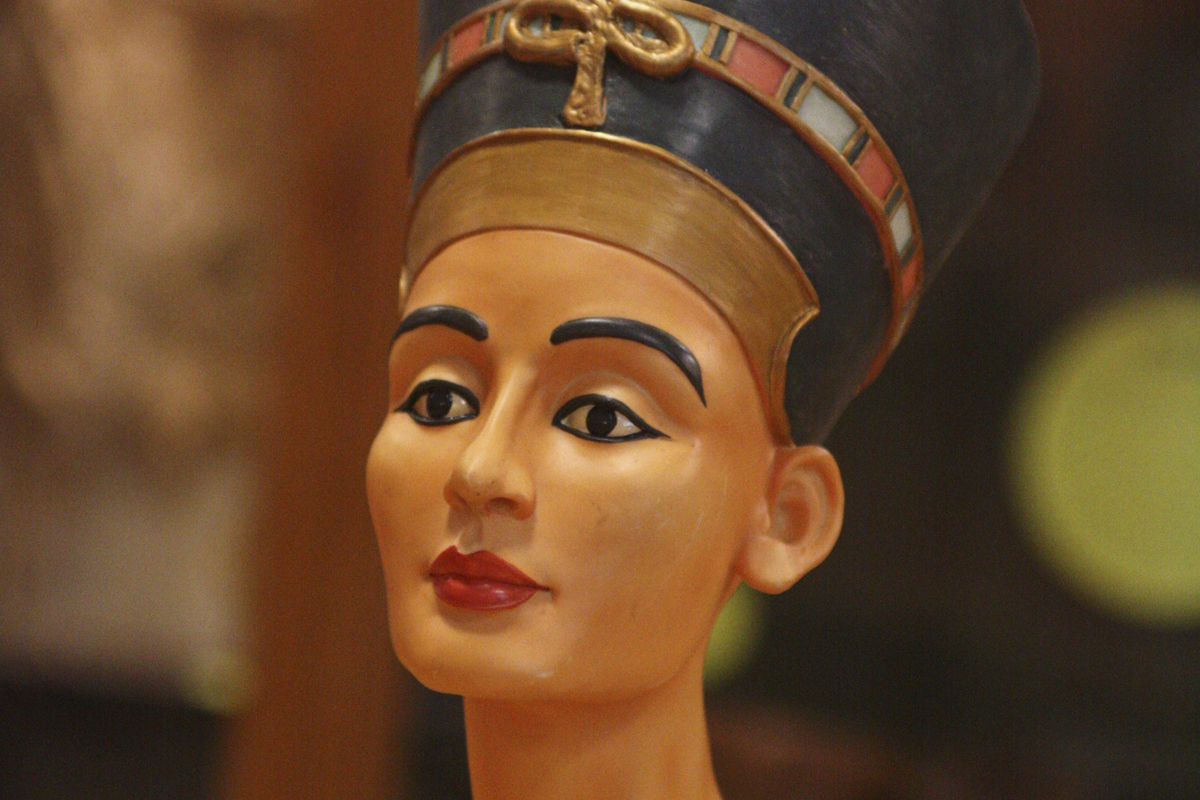Museum takes visitors through a tour of history
Allison Perkins sits in the south turret of Old Main, decked out in a lab coat and plastic gloves. Instead of playing with chemicals and test tubes, she inspects a pot shard, studying it for any sign that may clue her into the lives of the people who crafted it.
Around her, students shuffle in and out of the museum, some sitting to talk quietly for a minute, others using a table to catch up on homework.
“People who know about this place love coming in here because it’s a good atmosphere,” said Joelle Young, a sophomore in English who works at the USU Museum of Anthropology. “It’s warm, it’s friendly.”
Perkins, a sophomore in art, uses the space and resources to do research for her Introduction to Museums class.
“There’s a lot of different unique exhibits like the masks and body modification,” she said. “It’s a wide range of information.”
Being a small room tucked away in a corner, many students don’t utilize the museum because they don’t know it exists, Young said.
“It’s a place for learning, studying,” she said, “That’s what we’re all about, serving the people of Cache Valley. So far being stuck in this little box hasn’t done that.”
In spring of 2012, the museum, which takes up only a couple thousand square meet in Old Main, will move to the Barn, one of the oldest standing buildings on campus. It will double as the USU welcome center.
“It’s going to open up huge possibilities for the whole campus,” said Adrienne Day, a senior in anthropology and an employee of the museum. “The USU welcome center we have now is that tiny, little, booth at he bottom of Old Main Hill. That doesn’t cut it. We’re a legit school. We need to have something a little bit more formal to show off showcase what we’ve got.”
Young said, “We’re hoping it can be a center place on campus and that we’ll have people see that Barn and say, ‘Oh the barn is the museum now. It’s open and I can walk in.'”
First founded in 1962, the Anthropology museum started started small with two glass cases in the basement of Old Main. Today, the original animal skulls that sat in those cases are housed in a new case two floors above the basement.
Dr. Gordon Keller, USU’s first anthropology professor, started collecting small artifacts from his studies in places like the Danger Caves and Peru and displaying them for students of anthropology to see. From there, the museum has only moved upward and onward, Young said.
According to its website, the anthropology museum was opened to the public in 1984. A few years later, it moved to its current resting spot on the second floor of Old Main. Since then, it has been renovated to include a small curation room, exhibit lighting and humidity controls to better preserve the artifacts.
Once grant money started to accumulate in the late 2000s, outreach at the museum started to take off. Born in 2007, one of the first major programs funded through grants was “Saturdays at the Museum,” a weekly activity aimed at teaching children about different cultures.
On April 2, the museum will host their annual “Mesoamerican Marketplace,” where children gain pretend currency from doing small tasks, and then get to spend that currency on a variety of activities.
The same grant allowed the museum to start a “Teacher Trunk,” lesson plans and activities written by students that can be checked out by teachers all over the state. Day has had an active role in the program, revising the plans to make sure they fit curriculum.
“We want to teach,” she said. “Because we have the background for that, we can help articulate information to different audiences.”
When people think of Anthropology, they often think it’s just digging around in the dirt, but Day said it’s about the human experience.
“People want to know what we do,” She said. “We study people and their culture, past and present.”
– allee.evensen@aggiemail.usu.edu

